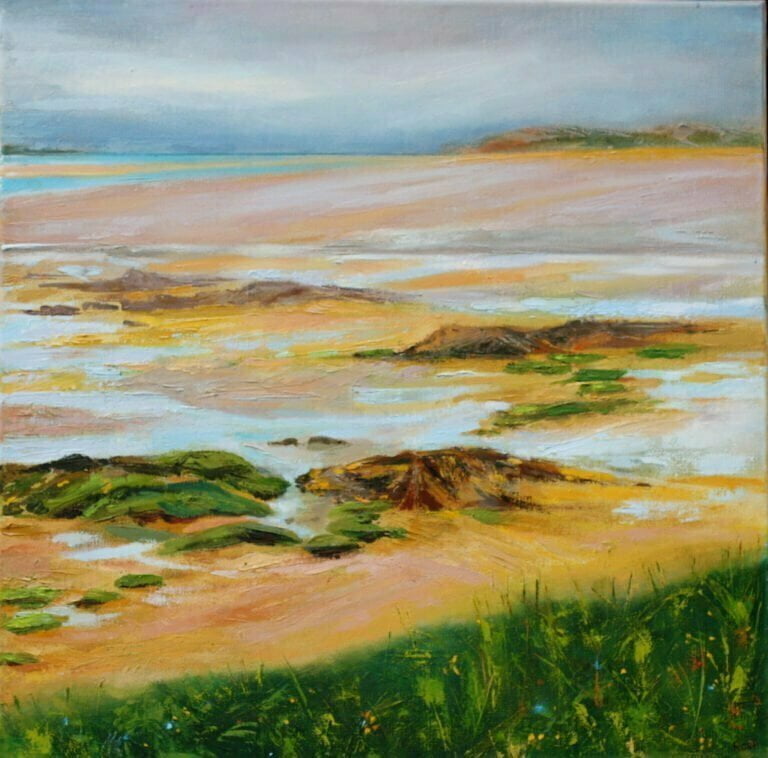FEATURED ARTIST OF THE MONTH: ROSEMARY BONNEY
Rosemary Bonney is a Dartmoor-based artist living in the village of Holne. In 2018 she was a finalist in the Devon Life landscape artist of the year and her work has been represented and reported in a number of magazines and newspapers including Devon Life and the Western Morning News.

‘Gorse Along the East Dart Valley‘
“Many of your paintings such as ‘Gorse Along the East Dart Valley’ are inspired by Dartmoor. Can you tell us more about your relationship with the moor and it’s impact upon your work?“
The Dartmoor landscape is my constant passion. Living close to this wild and spiritual place gives me endless inspiration and has enabled me to merge my love of art and the natural world. I seek out unusual subjects and am attracted to the less visited, remote and wilder areas of the moor and especially to the fleeting moods and light changes that the seasons and the unpredictable weather bring.
I am particularly drawn to the ancient sites such as the stone rows and circles that reflect the moor’s ancient history but also to the more gentle parts of the landscape with its intricate field patterns of hedged or stonewalled fields, juxtaposed with bleak moorland, sheltered valleys, tumbling rivers, bogs and rocky granite tors. Reminders of Dartmoor’s mining past are also forever present.
I capture transient moments with my camera, memorising a point in time to encapsulate it on return to my studio. Although I use photographs as an aide memoir, I portray the moor in my own style. My aim is to share with the viewer my personal experience of place, interpreting it in a painterly manner.
This painting ‘Gorse along the East Dart Valley’ was inspired by one of my many walks along the River Dart. It was a glorious spring day and the colour of the blue sky was reflected in the river, contrasting with the yellow of the gorse. I chose to capture it on canvas using oils to evoke the memory.

‘Ruddycleave Farm Revisited‘
“Can you tell us more about your use of colour in ‘Ruddycleave Farm Revisited’ and more generally in your practice?“
I set out to create a series of paintings with a shift in style to a more contemporary approach. Ruddycleave Farm Revisited was one of these and I felt that using a more controversial palette and a stylistic design was a step towards abstraction. I used oils to superimpose successive glazes of colour on the canvas to achieve an overall glow to the painting, developing a semi-abstracted style which is finished with sparingly used touches of solid paint. I kept the use of white to a minimum so as to maintain the purity of the colour. In this instance I chose a red and dull purple palette as a diversion from my more conventional use of ‘Dartmoor colours’ to make the painting more striking.

‘Sea and Sand Islay‘
“Your painting ‘Sea and Sand- Islay’ uses a wide variety of techniques, what are the techniques you used and what impact do they have upon the painting?”
This painting expressed memories of a stay on the Hebridean Island of Islay, featuring a view of one of the many lochs. It was painted in oils on canvas, mainly with a palette knife but starting with a base layer of yellow ochre to develop the wide expanse of sand exposed by the receding tide. The seaweed-covered rocks were built up with successive layers of thick paint to achieve a 3D impression. This has the effect of giving distance to the painting emphasised by the lighter colours towards the skyline. The grassy area in the foreground was expressed in a simple way with the additional technique of flicking paint and the use of a thin hard-edged tool to detail the plant stems.